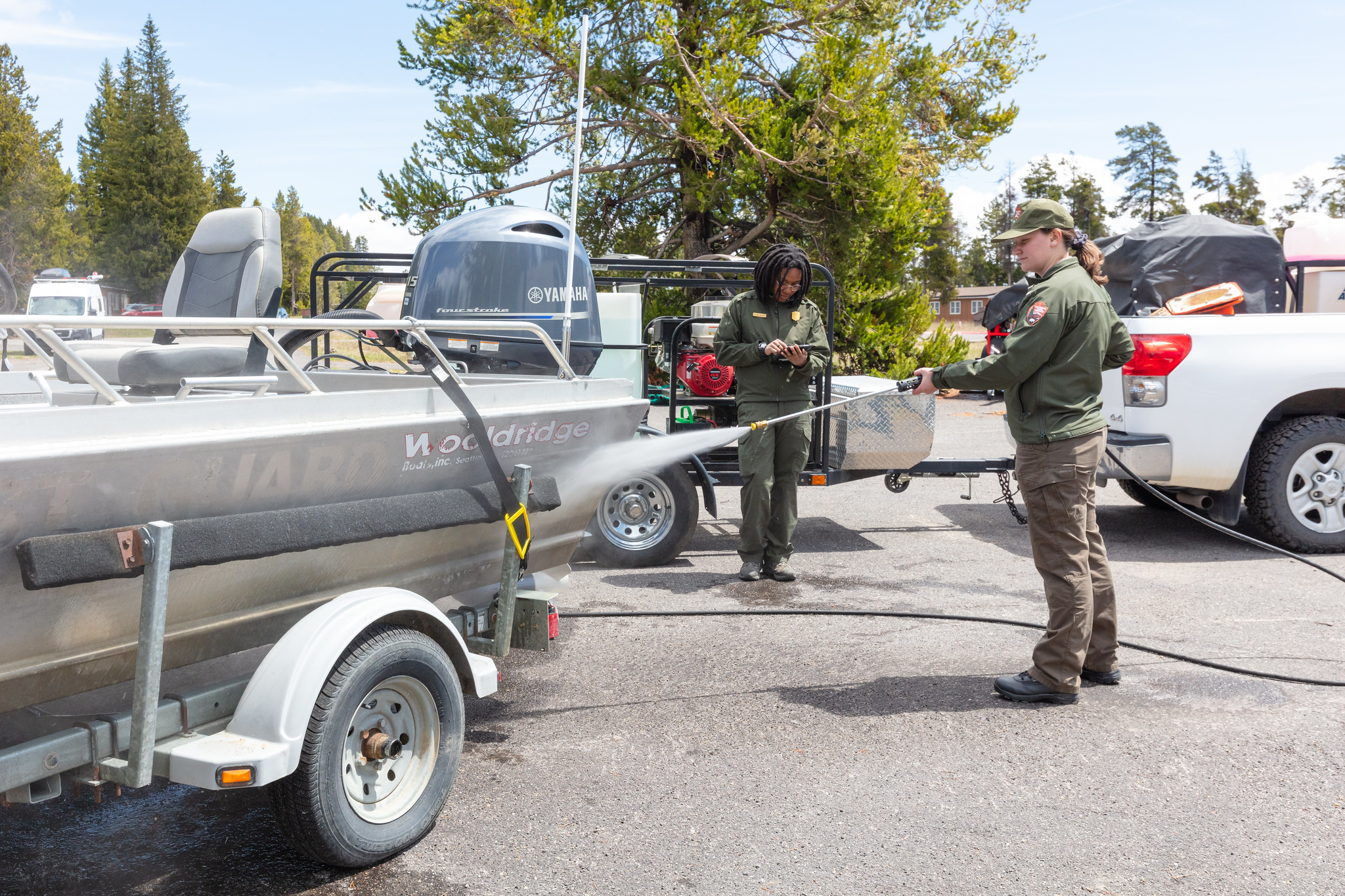News Release
You are viewing ARCHIVED content published online before January 20, 2025.
Please note that this content is NOT UPDATED, and links may not work. For current information,
visit https://www.nps.gov/aboutus/news/index.htm.

NPS / Jacob W. Frank
|
Subscribe
|
Contact: Morgan Warthin, (307) 344-2015
MAMMOTH HOT SPRINGS, WY – Yellowstone National Park seeks public comment on proposed measures to help stop the spread of aquatic invasive species (AIS) into park waters. The proposals include a 30-day mandatory dry time for some types of motorized boats and sailboats before entering park waters and the prohibition of watercraft previously fouled by mussels regardless of dry time.Yellowstone faces an increased risk of invasion by highly invasive zebra and quagga mussels following recent detections (2022 Pactola Reservoir, South Dakota, and 2023 Snake River, Twin Falls, Idaho) in waterways within a day’s drive of the park. Mussels have caused irreversible ecological damage and extensive impacts to infrastructure and recreation in waterways throughout the Midwestern and Eastern United States, as well as in the lower Colorado River Basin. In both 2022 and 2023, Yellowstone’s AIS inspectors intercepted and denied launch to mussel-fouled watercraft, highlighting the urgency and severity of the threat.
30-day Dry Time
To protect park waters and respond to this threat, Yellowstone proposes a 30-day dry time requirement for complex, motorized boats (inboard, inboard/outboard, and inboard jet) and sailboats prior to launching. Large, complex, trailered watercraft pose the highest risk of transporting and introducing invasive mussels and other AIS because they are difficult to inspect and less likely to completely drain/dry or be fully decontaminated. Manual decontamination with the use of hot water is not always 100% effective in removing all mussels. A 30-day dry time will mitigate the risk.
Previously Fouled Watercraft
Watercraft (motorized or non-motorized) previously fouled by mussels, regardless of dry time, would be denied launch. The launch of fouled watercraft increases the chances of false mussel detection by routine environmental DNA monitoring of park waters. This could result in significant impacts to operations and public recreational opportunities.
Prevention
These proposals would build on existing protections, including the 2019 prohibition on watercraft equipped with sealed internal ballast tanks, as well as the 2022 prohibition of watercraft with evidence of live or dead mussels.
Yellowstone National Park is located at the headwaters of the Yellowstone, Snake, and Missouri River drainages. These pro-active measures are required to ensure the long-term ecological integrity of park waters and downstream mussel-free waters in Wyoming, Montana, and Idaho. Failure to prevent invasion by zebra and quagga mussels could result in widespread negative impacts to natural resources, recreational values and local businesses, and could undo over two decades of work to restore native Yellowstone cutthroat trout to the park. Prevention of an AIS introduction is critical because there are no effective eradication methods, and control/containment is both costly and environmentally consequential.
30-day Public Comment Period
The comment period will begin March 7 and be open for 30 days. The preferred method for submitting comments is online at https://parkplanning.nps.gov/yellboats. Comments may also be mailed to: Yellowstone Center for Resources Attn: AIS Proposed Changes, PO Box 168, Yellowstone National Park, WY 82190. The deadline to submit comments is Friday, April 5.
At the conclusion of the 30-day public comment period, the NPS will analyze and consider all comments received. A final decision is expected in spring 2024.
Last updated: June 11, 2025
